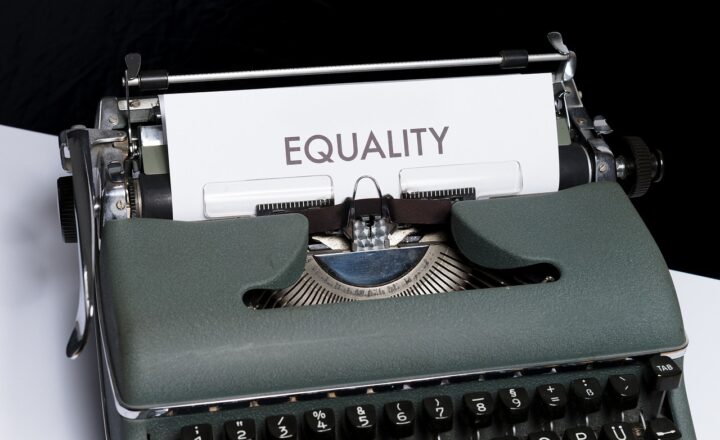How De-Militarized Zones Serve as Buffers Between Hostile Nations
November 16, 2024

De-Militarized Zones (DMZs) play a crucial role in international relations, serving as barriers that prevent military escalation between nations that are often at odds. These zones are established through treaties or agreements, aimed at reducing tensions and fostering dialogue in areas where hostilities have occurred or are likely to arise. In this article, we will delve into the concept of DMZs, exploring their historical significance, function, and the various implications they have on peacekeeping and diplomacy.
1. Understanding De-Militarized Zones: What Are They?
De-Militarized Zones are regions in which military forces, weapons, and fortifications are prohibited. The intention behind establishing a DMZ is to create a buffer that minimizes the likelihood of armed conflict. Typically, these zones are agreed upon by conflicting nations through negotiation and are monitored to ensure compliance.
The most famous DMZ is the one that separates North and South Korea. Established in 1953, the Korean DMZ stretches approximately 250 kilometers (160 miles) and is one of the most heavily fortified borders in the world. In this area, military presence is restricted, and both sides maintain a trivial force to act as a deterrent to aggression.
2. Historical Context: The Origins of DMZs
The concept of de-militarizing an area emerged from the need to cease hostilities and facilitate peace agreements between conflicting parties. DMZs have been established in various contexts, often resulting from wars or ongoing territorial disputes.
#### 2.1 The Korean War
The Korean War (1950-1953) exemplifies the need for a DMZ. Following the armistice agreement, the DMZ was created to act as a buffer between the two Koreas, ensuring that both sides could coexist with reduced military presence. This separation also paved the way for future peace talks, although they have often been strained.
#### 2.2 Other Historical Examples
Beyond Korea, DMZs have been implemented in different historical conflicts:
– **Vietnam**: Following the Vietnam War, the 17th Parallel was established as a temporary de-militarized zone, separating North Vietnam from South Vietnam.
– **Cyprus**: The UN-patrolled Buffer Zone in Cyprus has existed since 1974 when the island was divided into the Greek and Turkish Cypriot administrations. This zone has been instrumental in limiting military engagement between rival factions.
– **Golan Heights**: The area between Israel and Syria has a UN-monitored buffer zone that was created to prevent further hostilities, especially during the 1973 Yom Kippur War.
3. The Functions and Importance of DMZs
De-Militarized Zones serve multiple functions, often contributing to regional stability and peacebuilding efforts:
#### 3.1 Preventing Escalation of Conflict
The establishment of a DMZ significantly reduces the chances of armed confrontation. With fewer military forces deployed near the border, the potential for misunderstandings or accidental skirmishes diminishes.
#### 3.2 Fostering Dialogue and Negotiation
DMZs provide a neutral ground where representatives from conflicting parties can meet and engage in dialogue. Open communication channels are crucial for addressing grievances and facilitating conflict resolution.
#### 3.3 Creating Space for Humanitarian Efforts
Often, de-militarized zones can encourage humanitarian assistance to conflict-affected populations, as they can operate more freely without military restrictions. This can include medical aid, food distribution, and support for displaced individuals.
#### 3.4 A Deterrent Mechanism
The presence of a DMZ serves as a deterrent against overt military aggression. Though both parties may maintain minimal military presence, the clear boundaries set by DMZs remind nations of the consequences of violating the agreement.
4. Challenges Facing DMZs
Despite their advantages, DMZs are not without challenges. The effectiveness of a DMZ can diminish due to various political, social, and military factors:
#### 4.1 Compliance Issues
Monitoring and compliance can be difficult to enforce. Any intentional or unintentional military build-up within a DMZ can escalate tensions and undermine the purpose of such a zone.
#### 4.2 Changing Political Landscapes
Political shifts within the involved countries can influence the efficacy of a DMZ. Leadership changes may bring new attitudes toward existing agreements, potentially jeopardizing the status quo.
#### 4.3 External Influences
In some cases, third-party nations or groups may seek to influence or exploit the existence of a DMZ to their advantage, further complicating the original agreements.
#### 4.4 Emotional and Social Divisions
The communities residing near DMZs often experience psychological effects from the division, which can perpetuate historical grievances that complicate reconciliation efforts.
5. A Contemporary Look: DMZs in a Globalized World
In today’s globalized landscape, the role and efficacy of DMZs are continually evolving. With rapid advances in technology, including military technology, the traditional role of DMZs may need to be reassessed. Satellite surveillance and military drones can change how nations approach the concept of demilitarization. Thus, the future of DMZs will likely require a blend of traditional peacekeeping efforts and modern technological adaptations.
#### 5.1 Prospects for Peace
As geopolitical dynamics shift, the role of DMZs in fostering peace becomes more critical. Efforts to maintain and expand DMZs could promote regional cooperation, encouraging nations to pursue non-military resolutions to disputes.
#### 5.2 Education and Cultural Exchange
In some cases, DMZs are also being utilized for education and cultural exchange programs. These initiatives can help create bonds between previously hostile nations, fostering understanding and potentially breaking down the animosities that led to conflict.
Conclusion: The Future of De-Militarized Zones
As the world grapples with ongoing conflicts and escalating tensions, the role of De-Militarized Zones remains significant. While they are not a panacea for complex international relations, DMZs serve as essential tools for conflict resolution and preventive diplomacy. Through fostering dialogue, preventing escalation, and providing humanitarian assistance, DMZs can contribute to a more peaceful international environment.
The effectiveness of these zones relies on the commitment of involved nations to respect the terms of demilitarization and to seek peaceful resolutions to their disagreements. As history has shown, the establishment of DMZs paves the way for dialogue, cooperation, and hopefully, lasting peace amidst hostility.







